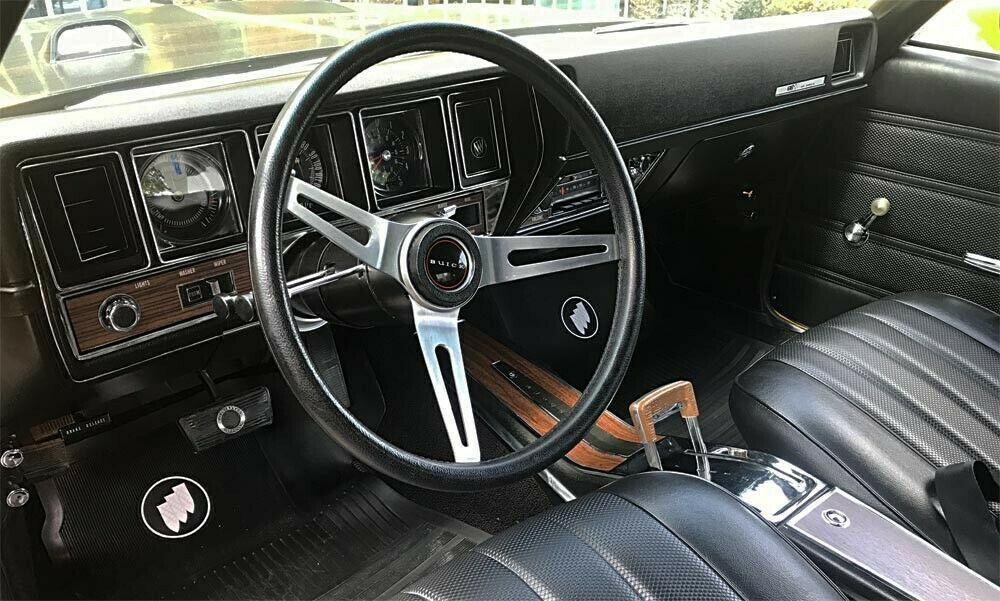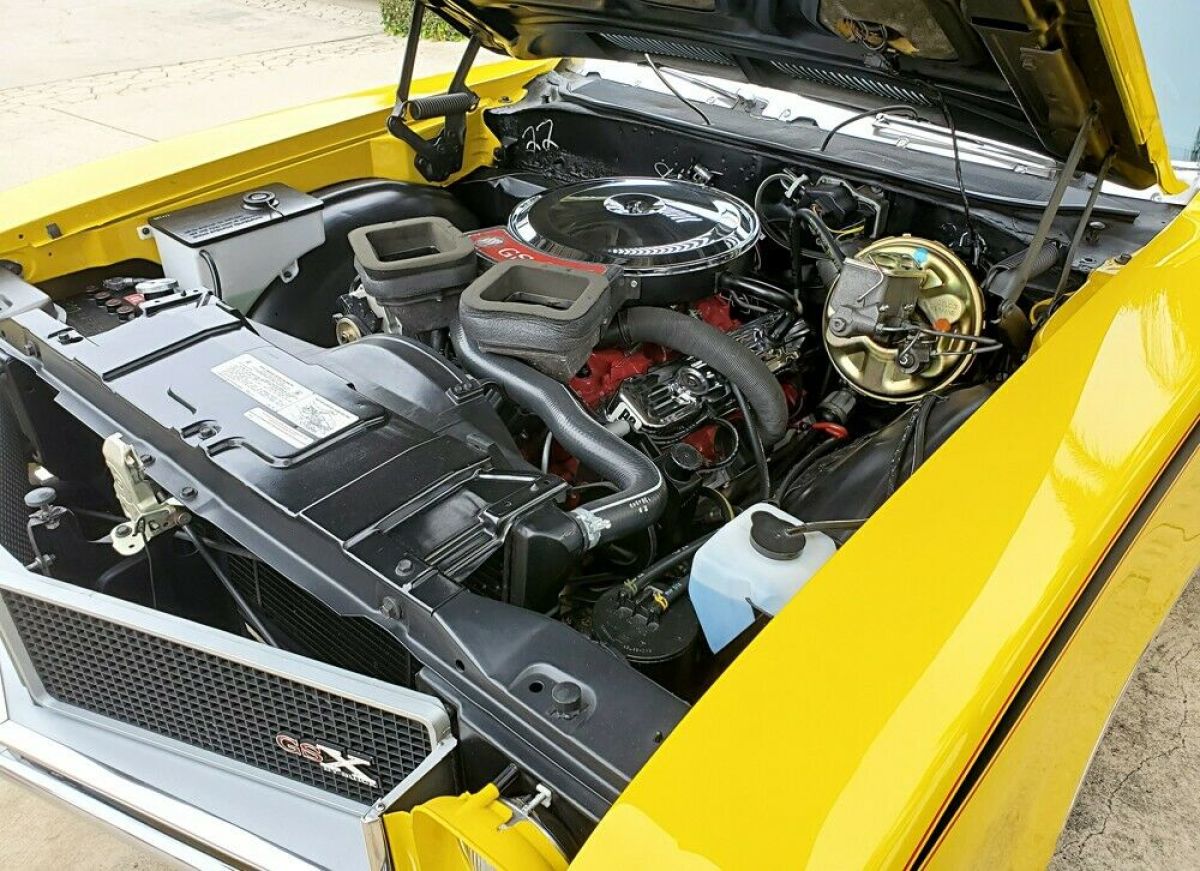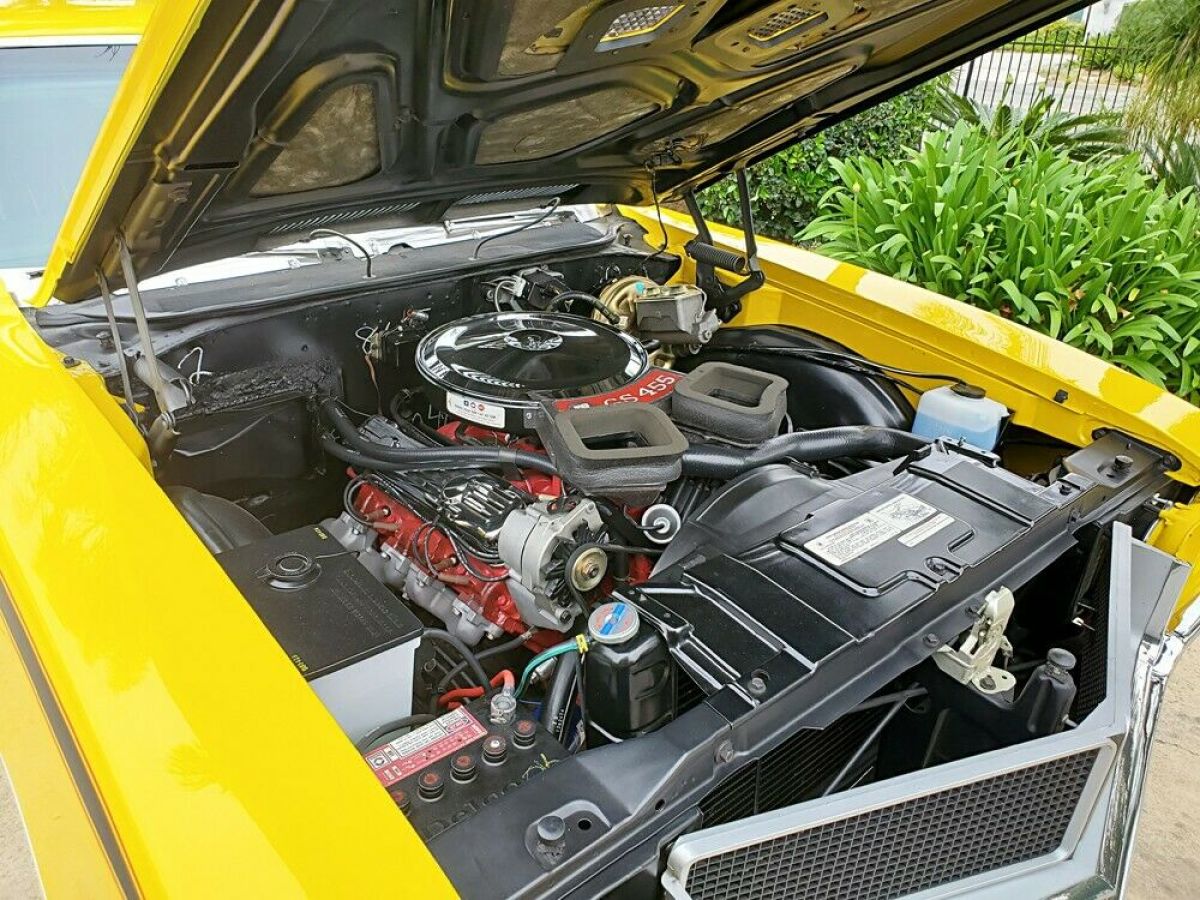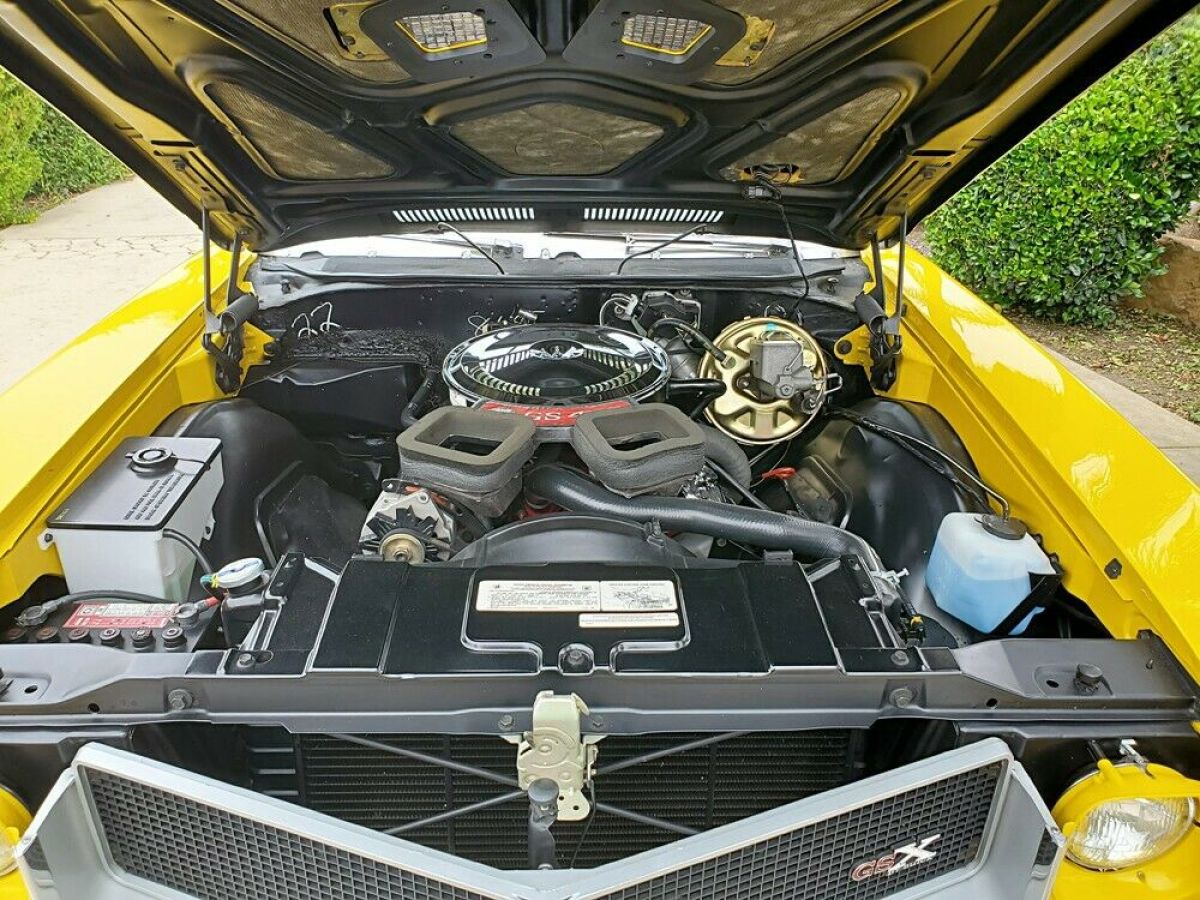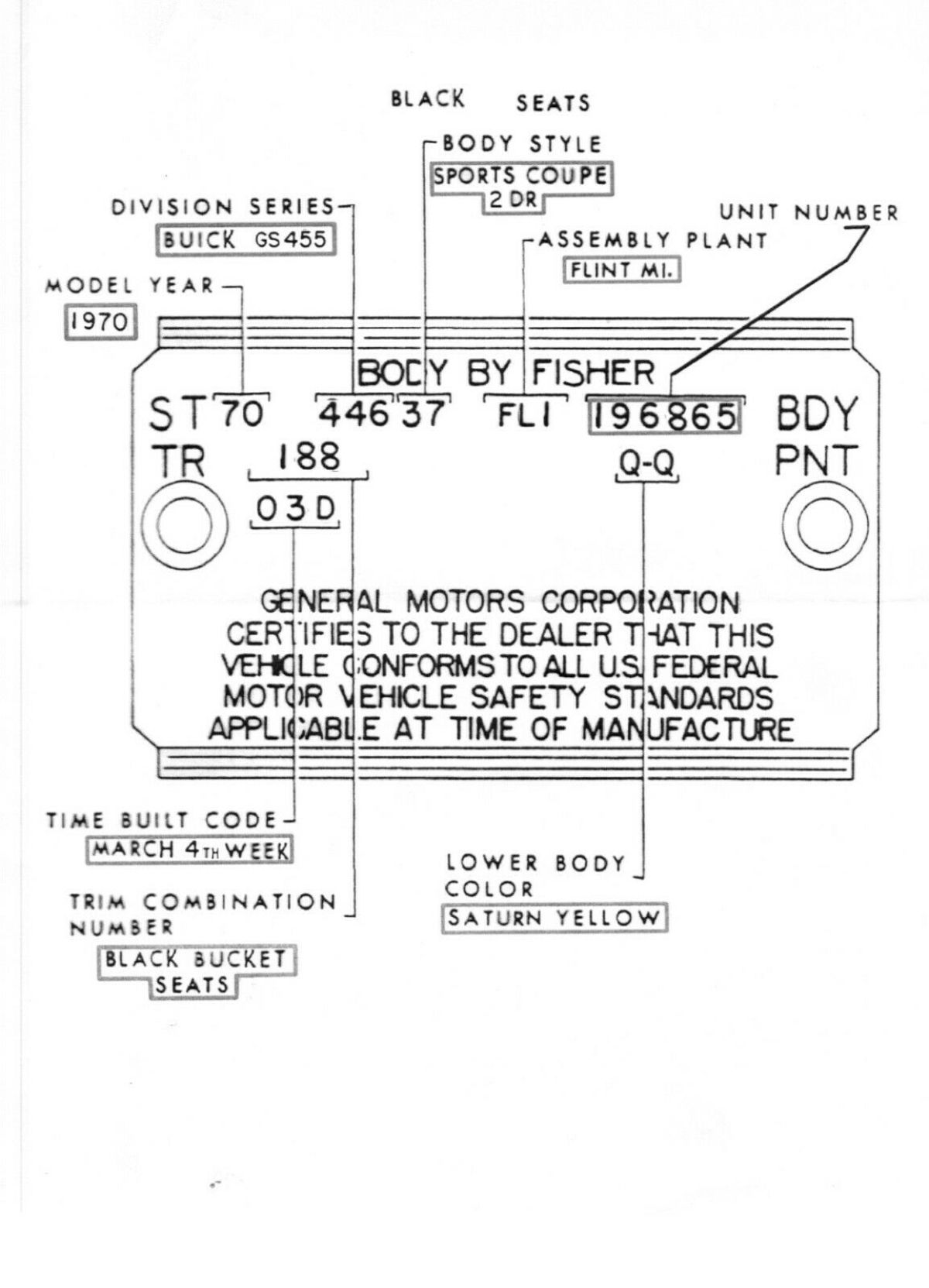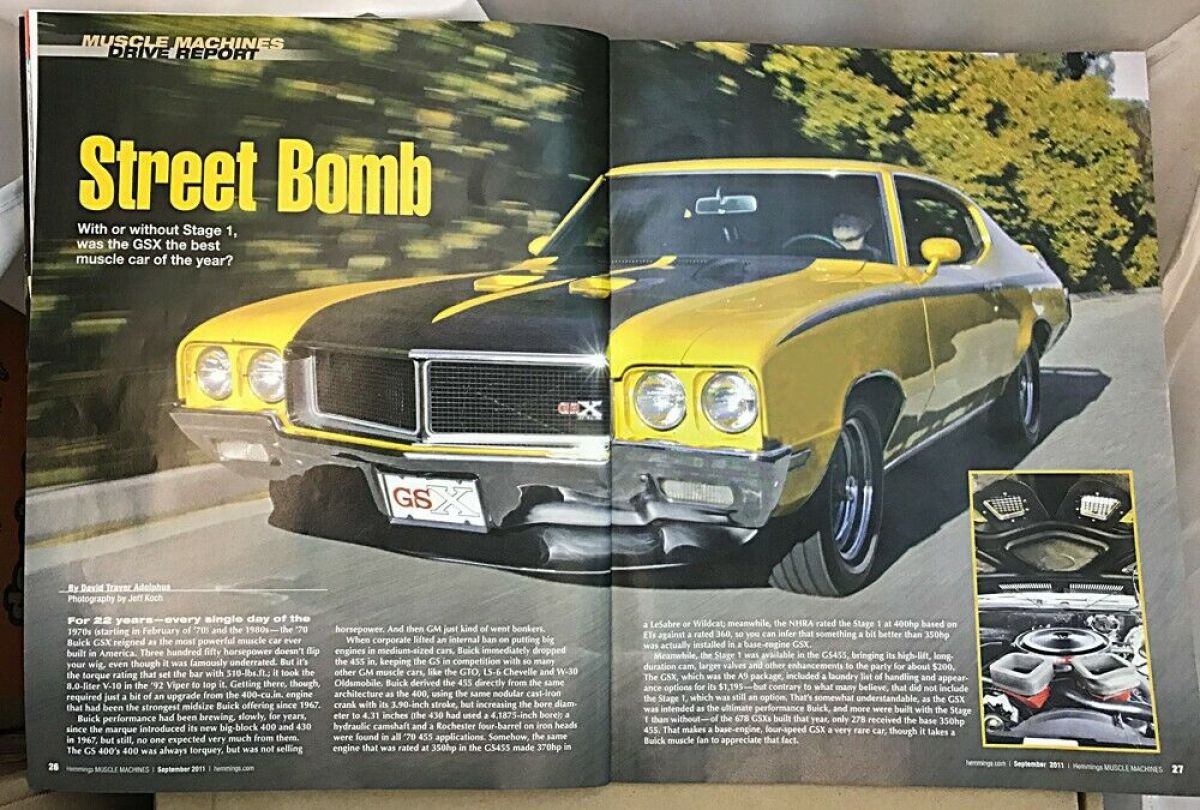455 ENGINE - 1 OF ONLY 678 PRODUCED
- Location: Oxnard, California, United States
- Condition: Used
- Make: Buick
- Model: GSX
- Type: Coupe
- Year: 1970
- Mileage: 67828
- VIN: 44637OH273808
- Color: Yellow
- Engine size: 455
- Number of cylinders: 8
- Fuel: Gasoline
- Transmission: Automatic
- Drive type: RWD
- Interior color: Black
- Drive side: Left-hand drive
- Vehicle Title: Clean
1970 Buick GSX Description
You are bidding onone (1)1970 BUICK GSX - 455 ENGINE - 1 OF ONLY 678 PRODUCEDThere are many classic cars you can choose from...but to be blunt most are junk. Flipper cars are rattle can restorations. They have poor body work full of bondo, orange-peel paint, poor fitting interiors, non numbers matching drivelines, and worst of all - rubberized undercoating to hide the rust and scale. You can also be sure they will run like a pig, likely overheat, and are unreliable.
If you are looking for a cheap car this is not it. If you are looking for a correct, restored, real, sorted out GSX, this is the premium Buick for you. This rare survivor runs as good as it looks. Fly in and drive it home with theoriginal build sheet in your file.
Here is a video walk around of the GSX:
Please copy and paste in your browser to view.
https://youtu.be/oaV-gtKIgMA
The GSX was featured in an article titled, "Street Bomb," of the September 2011 print copy of Hemmings Muscle Machines. Please read the magazine print text below to get a better understanding of the history of this car and the extent of the restoration process. Feel free to message with any questions. I encourage you to send your GM expert to perform a complete inspection of all the matching numbers of the complete drivetrain prior to purchase. I will provide a lift if requested. The photos and video are all current images.
This is a no expense spared....legitimate restoration of a very rare Buick.
https://www.hemmings.com/stories/article/street-bomb-1970-buick-gsx
Here is the print text from that article:
For 22 years--every single day of the 1970s (starting in February of '70) and the 1980s--the '70 Buick GSX reigned as the most powerful muscle car ever built in America. Three hundred fifty horsepower doesn't flip your wig, even though it was famously underrated. But it's the torque rating that set the bar with 510-lbs.ft.; it took the 8.0-liter V-10 in the '92 Viper to top it. Getting there, though, required just a bit of an upgrade from the 400-cu.in. engine that had been the strongest midsize Buick offering since 1967.
Buick performance had been brewing, slowly, for years, since the marque introduced its new big-block 400 and 430 in 1967, but still, no one expected very much from them. The GS 400's 400 was always torquey, but was not selling horsepower. And then GM just kind of went bonkers.
When corporate lifted an internal ban on putting big engines in medium-sized cars, Buick immediately dropped the 455 in, keeping the GS in competition with so many other GM muscle cars, like the GTO, LS-6 Chevelle and W-30 Oldsmobile. Buick derived the 455 directly from the same architecture as the 400, using the same nodular cast-iron crank with its 3.90-inch stroke, but increasing the bore diameter to 4.31 inches (the 430 had used a 4.1875-inch bore); a hydraulic camshaft and a Rochester four-barrel on iron heads were found in all '70 455 applications. Somehow, the same engine that was rated at 350hp in the GS455 made 370hp in a LeSabre or Wildcat; meanwhile, the NHRA rated the Stage 1 at 400hp based on ETs against a rated 360, so you can infer that something a bit better than 350hp was actually installed in a base-engine GSX.
Meanwhile, the Stage 1 was available in the GS455, bringing its high-lift, long-duration cam, larger valves and other enhancements to the party for about $200. The GSX, which was the A9 package, included a laundry list of handling and appearance options for its $1,195--but contrary to what many believe, that did not include the Stage 1, which was still an option. That's somewhat understandable, as the GSX was intended as the ultimate performance Buick, and more were built with the Stage 1 than without--of the 678 GSXs built that year, only 278 received the base 350hp 455. That makes a base-engine, four-speed GSX a very rare car, though it takes a Buick muscle fan to appreciate that fact.
GSX came in Saturn Yellow or Apollo White with identical graphics: callouts on the rear quarters; awesome badge on the blacked-out grille; black stripe carried onto a spoiler apparently hewn from the living rock. This was not a plastic piece, and you couldn't get it on anything but a GSX; there are fakes, but they're fairly easy to spot today--they weigh less, and the car should have a unique torsion spring in the trunk to hold the lid open with the extra weight.
With a lip spoiler in front and a tach on the hood, this is a dynamic looking machine: the zingiest Buick of them all. Did the aero aids work? Who knows? Buick was so busy pushing the Stage 1 to the press that no one seems to have road-tested a standard GSX. Hot Rod took a Stage 1 GS with a TH400 to a 14.4-second quarter mile at 96 MPH, and you can find ample reports of low-13 quarters and high five-second 0-60s from the day. In the mid-Eighties, Popular Mechanics found 13s from a Stage 1 GS455 with nothing more than a switch to radials, although there was no GM muscle car with more meat than the G60-15s that came standard on a GSX.
The Stage 1 engine brought with it a 3.64:1 rear gear ratio, in both the GS455 and the GSX, regardless of whether it used the TH400 or the four-speed; Stage 1 cars with A/C received 3.42 gears, as did base 455 models. That may have hurt off the line, but Car Life saw 129 MPH in a GS455.
Quite by chance, we managed to drive the GSX back to back with pair of '70 GM A-bodies: a Chevelle SS and a GTO Judge.Decals and add-ons gave the GSX a unique look, but you also got the whole Buick handling catalog for your money: heavy-duty suspension front and rear with front 450-pound springs and rear 144-pound springs; shocks with 1-inch diameter pistons; link-type 1-inch front anti-roll bar and linkless 0.875-inch rear anti-roll bar. Similar pieces could be had in some of the other GM intermediates, though each division's suspension tuning was unique. Buick also incorporated a number of other small but significant parts that made its A-body different from those built by Pontiac, Chevrolet or Olds, contributing to the GSX's extraordinary ride and handling.
So an A-body is an A-body, right? You've driven one and you've driven them all, and maybe you weren't even too impressed. Well, put some duct tape on your socks and prepare to yell when it rips the hair off your shins, because we're going to blow them off. The GSX is not only the best-driving GM, it's easily as good as the best Mopars, too.
It's hard to convey the degree to which this car feels better than other A-bodies. "I have a 440 Six Barrel Road Runner and it sounds like a tin can; the Buick sounds like a vault when you shut the doors," said owner Steve Fusci, of Santa Rosa Valley, California. "There's no comparison." The Buick's interior alone tells you that you're farther up the food chain from mere Chevelles and GTOs: lots of faux wood, with chrome-edge gauges. The seats are softer, plusher, and let you sink in more than in other A-bodies. You expect a little more in a Buick, and though so far it's only gingerbread in the front parlor, you get it. The hood scoops are fairly subtle from this vantage point, and not in keeping with the exhibitionist nature of the GSX--they're more suited to a standard GS. The door feels more substantial than the GTO's and Chevelle's. And the hood tach is illuminated, whether the lamps are on or not.
Idle toggled between 900-1,000 RPM, and in notes deeper than its 400-equipped cousins. Inside, you hear the engine thrumming away more than you do the exhaust, which is fairly subtle, and it's remarkably quiet at highway speeds--it's mostly intake noise, and between the silence, comfort and gearing, it's a great long-distance highway machine "It's literally like driving a Cadillac--it's that quiet," said Steve.
But there's nothing sensitive about the way the engine strains against the brakes when you pull that horseshoe shifter into D; this baby wants to go. The super-sensitive throttle reveals freight-train torque, and presses you into your seat off idle and clear through the revs. The Turbo 400 is tuned for quick part-throttle upshifts, though, so you'll need to stay in it in order to get the full effect of the big 455 winding out.
And here's a surprise: Despite the extra weight of the big iron 455 over the front wheels, which came through the steering wheel loud and clear, the GSX's handling still felt flatter and better resolved, and the ride felt softer, than either of the 400-equipped A-bodies we had tried earlier. (If anything, the ride seemed a little too soft--a tad on the floaty side, belying its kinship with the Electra 225s and LeSabres of the era.) Buick had been putting good brakes under its cars for a long time, and this was a shining example. We were down a fairly steep, if cleanly-paved, grade and felt the front tires get a little squirrelly, which we can put down to the weight of the engine; in all other situations, the GSX brakes straight and true, with fine pedal modulation available.
People used to driving Buicks of the time were not expecting good handling. Comfort, and aspirational luxury, sure, but the idea of flinging a Buick around a country lane was as familiar to the average Buick driver as the proto-punk garage music coming out of Detroit. That's what GM sold the Corvette for, and who was cross-shopping those two? Or anything with the GSX, for that matter--what on earth was competition for this expensive, stupendously powerful... Buick? The SS 396 Chevelle and a GTO Judge, both 1970 models with 400/four-speeds felt fine, but the GSX felt like an entirely different car--certainly more, which is what you'd expect from a Buick, but just more together, more all-of-a-piece, better resolved somehow. It made us want more.
But of course, you couldn't get it. Horsepower in the 455 started to plummet in 1971, so those 678 cars are it, finito. The '71s just aren't the same. Buick took one swing, hit it out of the park and retired to Boca. But man, what a swing it was.
Owner's View. "When I was in high school, my friend picked me up in a Buick GS455. I asked him what he was doing with that thing, and he kept telling me how fast the car was. I told him that the car should be used as a barge to ferry grandmas to Long Island. He floored the Buick GS and took five years off my pathetic life. I was shocked at what a 455 could do. The thing was a freaking animal. It just kind of stuck in my brain, that one ride I had."
"I am attempting to collect relatively rare muscle cars, complete with some form of documentation. Everybody thinks it's a clone, and I don't even try to defend the car anymore, but I have the build sheet locked away in a bank vault. It costs just as much to restore a rare, documented car as it does to do a clone, and I am lucky to have this GSX. Muscle cars are my passion"
Come on, Buick, Light My Fire, or... How the GS455 ruined The Doors There are numerous versions of this story, but they agree in the general outlines. In November 1968, The Doors were touring the United States without Jim Morrison, who was with his girlfriend, Pamela, in London. While he was gone, Buick approached the band with an offer to license "Light My Fire," their immortal song from 1966, for an Opel ad. With Morrison AWOL, the other members of the band gladly took the $75,000 from GM for a series of radio, print and TV ads for what Ray Manzarek in Angels Dance and Angels Die called "a small little ecologically correct car, a little four-cylinder, two-seater... it obviously wasn't a big Buick."
"That was the end of the dream," said their manager, Bill Siddons. Drummer John Densmore said, "Jim was being deceived by the three soulmates with whom he had made a pact back in Venice, California, without any business people present."But when the ads eventually ran, Morrison was incensed, both by the decision made without him and the fact that the line was applied to the GS455. He reportedly threatened to destroy a Buick on stage and instructed the band's label, Elektra, to cancel the contract, but there was already a billboard on Sunset Strip visible from The Doors' office.
In a poem The Doors fans think may be inspired by "The Buick Incident," Morrison wrote: 'They deserted me, deserted the cause, message or word for another god. 'We're kicking you out of our universe!'
CLUB SCENE
Buick Club of America P.O. Box 360775 Columbus, Ohio 43236 614-472-3939, Dues: $50/year • Membership: 9,000
Buick GS Club of America 625 Pine Point Circle Valdosta, Georgia 31602 229-244-0577,Dues: $40/year • Membership: 4,800
PROS + Among the fastest ever + Cadillac comfort + Wonderful handling
CONS - More fakes than real examples - Often very expensive - Radioactively yellow
SPECIFICATIONS
Price Base Price -- $3,283 Price as profiled -- (est.) $4,500 Options on car profiled -- GSX option: includes hood tach, G60-15 raised-letter tires, chromed 15-inch Road Wheels, Rallye steering wheel, 3.42 axle with positive traction, sport mirrors, front and rear spoilers, vinyl bucket seats, power front disc brakes, heavy-duty suspension with front and rear stabilizer bars, graphics and emblems, $1,195; TH400 transmission, $42.24; rear speaker, $16.64; full-length console, $61.09
Engine Type -- Buick tall-deck OHV V-8, cast-iron block and cylinder heads Displacement -- 455.7 cubic inches Bore x stroke -- 4.3125 x 3.90 inches Compression ratio -- 10.0:1 Horsepower @ RPM -- 350 @ 4,600 Torque @ RPM -- 510-lbs.ft. @ 2,800 Valvetrain -- Hydraulic-lifter camshaft, shaft-type rocker arms, 2.00/1.625-inch valves, intake/exhaust Main bearings -- 5 Fuel system -- Rochester Quadrajet four-barrel, mechanical pump Ignition system -- 12-volt Lubrication system -- Full pressure, gear-type pump Exhaust system -- Dual, cast-iron manifolds, low-restriction mufflers
Transmission Type Turbo Hydra-Matic 400 automatic Ratios: 1st -- 2.48:1 2nd -- 1.48:1 3rd -- 1.00:1 Reverse -- 2.08:1
Differential Type -- Buick-Olds-Pontiac 8.2-inch, limited-slip Ratio -- 3.42:1
Steering Type -- Recirculating ball nut, power assist Ratio -- Variable, 17.0:1 to 13.6:1 overall Turns, lock-to-lock -- 3.4 Turning circle -- 39.9 feet
Brakes Type -- Hydraulic dual-circuit, power assist Front -- 11.0-inch vented disc Rear -- 9.50 x 2.00-inch finned drum
Chassis & Body Construction -- Steel body on full-perimeter frame Body style -- Two-door, five-passenger hardtop coupe Layout -- Front engine, rear-wheel drive
Suspension Front -- Independent; upper and lower control arms, coil springs, ball joints, 1-inch anti-roll bar, hydraulic shocks Rear -- Live axle, coil springs, upper and lower control arms, 0.875-inch linkless anti-roll bar, hydraulic shocksWheels & Tires Wheels -- Chrome-plated stamped-steel, five-lug Front -- 15 x 7 inches Rear -- 15 x 7 inches Tires -- Goodyear Polyglas GT fiberglass belted (currently BFGoodrich Radial T/A) Front -- G60-15 (currently P235/60R15) Rear -- G60-15 (currently P235/60R15)
Weights & Measures Wheelbase -- 112 inches Overall length -- 202 inches Overall width -- 77.3 inches Overall height -- 53 inches Front track -- 60.12 inches Rear track -- 59 inches Shipping weight -- 3,919.7 pounds
Capacities Crankcase -- 4 quarts Cooling system -- 19.2 quarts Fuel tank -- 20 gallons Transmission -- 6 pints (pan)
Calculated Data BHP per cu.in. -- 0.77 Weight per BHP -- 11.19 pounds Weight per cu.in. -- 8.60 pounds
Production Buick produced 678 GSXs for 1970; 278 of them had the base 350hp 455.
Performance 0-60 MPH -- 6.5 seconds* 1/4-mile ET -- 14.28 seconds @ 100.5 MPH** Top speed -- 129 MPH* *Car Life, 1969 **Car Craft, 1970
Terms of Sale:
This vehicle is being sold AS-IS, WHERE-IS with NO warranty expressed, written, or implied. Any descriptions or representations are for identification purposes only and are not to be construed as a warranty of any type. It is the responsibility of the buyer to have thoroughly inspected the vehicle to have satisfied himself herself as to the condition and value and to bid based on that judgement. We try to represent it as accurately as possible to disclose any known defects associated with this vehicle. Seller assumes no responsibility for any repairs. We do not warranty anything that may or could happen after the sale. Buyer agrees the venue for any legal dispute to be Ventura County, California.
Payment Methods:
Bank Wire Transfer
More Buick classic cars for sale
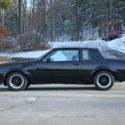 1987 Buick GNX Number 186 of 547 Produced
1987 Buick GNX Number 186 of 547 Produced
 1954 Buick Roadmaster Convertible- 1 of 3,305 Produced
1954 Buick Roadmaster Convertible- 1 of 3,305 Produced
 1968 Buick Skylark GS 350 ***RARE*** - 1 of 349 Produced!
1968 Buick Skylark GS 350 ***RARE*** - 1 of 349 Produced!
 1983 Buick Riviera XX, 1 of 500 Produced, Pace Car Edition, Car
1983 Buick Riviera XX, 1 of 500 Produced, Pace Car Edition, Car
 1966 Red Gran Sport Custom! Rare only 852 produced
1966 Red Gran Sport Custom! Rare only 852 produced
 1971 buick gs 4 speed convertible ( VERY RARE ) 51 PRODUCED.
1971 buick gs 4 speed convertible ( VERY RARE ) 51 PRODUCED.
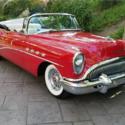 1954 Buick Roadmaster Convertible- 1 of 3,305 Produced- One Owner Car
1954 Buick Roadmaster Convertible- 1 of 3,305 Produced- One Owner Car
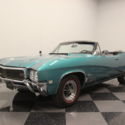 RARE 4-SPD CONVERTIBLE, 1 OF 351 PRODUCED, #'S MATCHING 400, R134 AC, NICE CAR!
RARE 4-SPD CONVERTIBLE, 1 OF 351 PRODUCED, #'S MATCHING 400, R134 AC, NICE CAR!
 1953 Buick Skylark Convertible 1 of 1,690 Produced Vintage Air Conditioning
1953 Buick Skylark Convertible 1 of 1,690 Produced Vintage Air Conditioning
 MINT CONVERTIBLE, 59,291 ACTUAL MILES. 1 OF 1,750 CONVERTIBLES PRODUCED IN 1983
MINT CONVERTIBLE, 59,291 ACTUAL MILES. 1 OF 1,750 CONVERTIBLES PRODUCED IN 1983
 1987 Buick GNX Number 186 of 547 Produced
1987 Buick GNX Number 186 of 547 Produced
Year: 1987
Mileage: 54967
Mileage: 54967
 1954 Buick Roadmaster Convertible- 1 of 3,305 Produced
1954 Buick Roadmaster Convertible- 1 of 3,305 Produced
Year: 1954
Mileage: 12,968
Mileage: 12,968
 1968 Buick Skylark GS 350 ***RARE*** - 1 of 349 Produced!
1968 Buick Skylark GS 350 ***RARE*** - 1 of 349 Produced!
Year: 1968
Mileage: 102,000
Mileage: 102,000
 1983 Buick Riviera XX, 1 of 500 Produced, Pace Car Edition, Car
1983 Buick Riviera XX, 1 of 500 Produced, Pace Car Edition, Car
Year: 1983
Mileage: 113
Mileage: 113
 1966 Red Gran Sport Custom! Rare only 852 produced
1966 Red Gran Sport Custom! Rare only 852 produced
Year: 1966
Mileage: 82,980
Mileage: 82,980
 1971 buick gs 4 speed convertible ( VERY RARE ) 51 PRODUCED.
1971 buick gs 4 speed convertible ( VERY RARE ) 51 PRODUCED.
Year: 1971
Mileage: 90121
Mileage: 90121
 1954 Buick Roadmaster Convertible- 1 of 3,305 Produced- One Owner Car
1954 Buick Roadmaster Convertible- 1 of 3,305 Produced- One Owner Car
Year: 1954
Mileage: 12,968
Mileage: 12,968
 RARE 4-SPD CONVERTIBLE, 1 OF 351 PRODUCED, #'S MATCHING 400, R134 AC, NICE CAR!
RARE 4-SPD CONVERTIBLE, 1 OF 351 PRODUCED, #'S MATCHING 400, R134 AC, NICE CAR!
Year: 1968
Mileage: 74,679
Mileage: 74,679
 1953 Buick Skylark Convertible 1 of 1,690 Produced Vintage Air Conditioning
1953 Buick Skylark Convertible 1 of 1,690 Produced Vintage Air Conditioning
Year: 1953
Mileage: 103000
Mileage: 103000
 MINT CONVERTIBLE, 59,291 ACTUAL MILES. 1 OF 1,750 CONVERTIBLES PRODUCED IN 1983
MINT CONVERTIBLE, 59,291 ACTUAL MILES. 1 OF 1,750 CONVERTIBLES PRODUCED IN 1983
Year: 1983
Mileage: 59291
Mileage: 59291




